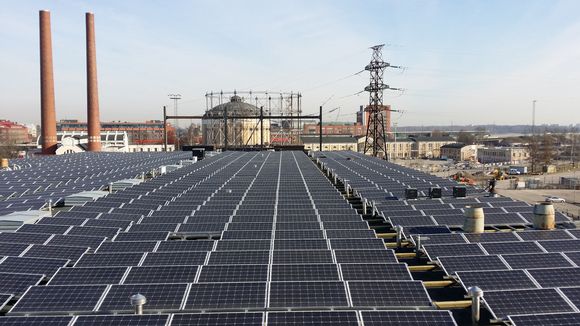IEA under-estimates renewable energy: expert

A professor at a Finnish University says that the International Energy Agency has consistently under-estimated the potential and future growth of renewable energy sources in its annual World Energy Outlook report.
The report is used by global policy-makers to help shape decisions that mould the future of energy policy.
It’s possible that world energy policy could be being formed by policy-makers making false assumptions, according to one professor at Lappeenranta University of Technology. Christian Breyer, the university’s professor of solar economy, says that the International Energy Agency’s annual World Energy Outlook document has not been fair to renewable technologies.
The organisation’s current projection of the share of renewable in global energy consumption shows that by 2030 just 14 percent of the total will come from renewable. Based on recent growth, however, the figure in 2030 would be 60 percent.
“The reality showed exponential growth,” said Breyer. “That means the annual market grow. The assumption in The World Energy Outlook is that the annual market installation will not grow. That means, what have been installed last year, this number will be installed for the next two decades.”
“The technologies we’ll need”
Researchers in Lappeenranta in collaboration with the Energy Watch Group, tracked IEA reports from 1994 to 2014 and compared their predictions for solar and wind production with the reality that followed. They found the forecasts were misleading, and under-estimated renewable potential.
“It’s a shame, because these two technologies are exactly the technologies that we’ll need in energy production in the future,” said Breyer. “It’s becoming clearer every day that these two technologies are the ones we need.”
The IEA forecast for 2010 predicted a level of solar energy production in 2024 that had already happened in January 2015. Only oil firms like BP, Shell and Exxon Mobile have forecast levels of renewable production similar to the IEA.
Key reference
Greenpeace and Bloomberg have up to now offered more accurate predictions of renewable production than the IEA. This matters, because the IEA’s pronouncements have a huge influence on policy-makers worldwide.
The Energy watch Group is urging the IEA to launch closer co-operation with NGOs and the scientific community in an effort to bring forecasts and reality closer together.
“Companies, investors and particularly governments take it as a key reference in investment decisions, and local governmental policies are based on it,” said Breyer. “If the fundamental analysis of these reports is wrong in two of the most relevant technologies, then if others rely on these effects, then the result can be very misleading decisions.”
Related stories from around the North:
Canada: Energy challenges in Canada’s North, Eye on the Arctic
Finland: One of world’s largest geo-bio-energy facilities slated for Finland, Yle News
Sweden: Will Sweden be able to produce enough energy in the future?, Radio Sweden
United States: Reindeer, oil at Energy Summit, Blog by Mia Bennett



